It’s nearly spring! Which means our garden minds are dreaming.
As you begin planning your garden this year, we wanted to share a few of our favorite varieties and tips for creating the garden of your dreams.
Filling your garden with flowers
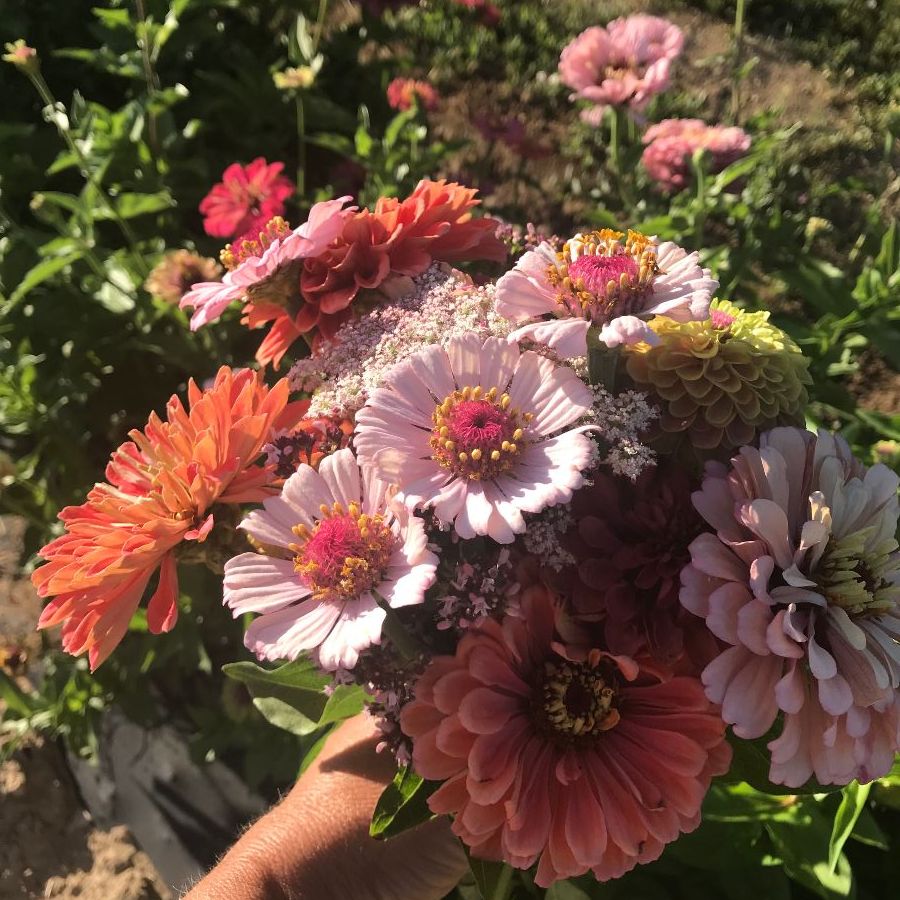
In thinking about growing blooms for fresh cutting, you don’t have to just think about flowers. Consider herbs and grains like amaranth, buckwheat, and multi colored quinoa.
These tall stems can be show stoppers on their own or make great fillers in your arrangements. Herbs like Purple Ruffles basil, Thai Basil and Cardinal Basil, and more unusual and tasty herbs like Perilla (Purple Shiso), Indian Coriander and Papalo make lovely fillers that add shades of green and purples in your bouquets and in the garden.
Add edible flowers to your garden to attract more pollinators and give you something to harvest for meals. These are some of my personal favorites:
- Bee Balm (or Monarda)
- Borage (bumble bees love these flowers as you will too – they taste like cucumber!)
- Blue Butterfly Pea
- Chamomile
- Green Shiso
- Echinacea or Cone Flower
- Bronze Fennel
- Chervil
Growing an Aromatherapy Garden
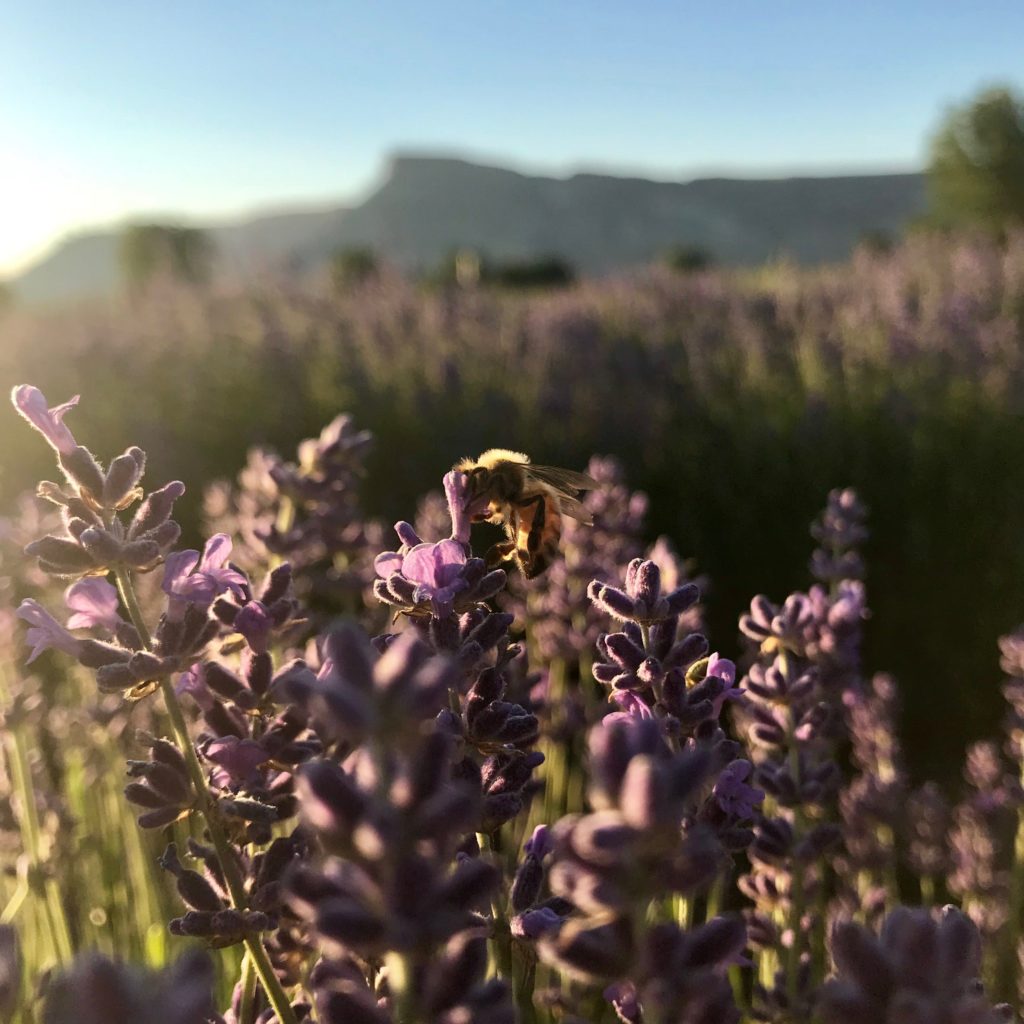
Gardens aren’t just for growing food. You can also grow fragrant plants simply for your enjoyment and well-being and design and aromatherapy garden paradise.
Being a lavender and herb farmer, I’m naturally attracted to cultivating different scents in my garden and on my farm. I find myself walking down rows of herbs and borders with my hands freely touching the plants and then smelling my hands. I do it without even noticing. I will often pick leaves and rub them between my fingers and hold the leaves or flower buds up to my nose.
I often feel a sense of peace and harmony when I do this. Taking a moment here and there to smell the wonderful herbs growing around our farm is a true pleasure.
I’ll feel exhilaration when I pick thyme or mint. My salivary glands are activated when I pick lemon verbena or lemon balm.
When planning out your aromatherapy garden, one approach is to create fragrance areas in your garden with different themes throughout your garden space.
An area of energizing scents: peppermint, rosemary, lemon balm. An area of calming scents: lavender, hyssop, chamomile, bergamot.
Other wonderful aromatic herbs to consider for your garden: basil, coriander, dill, fennel, marjoram, oregano, sage, rosemary and savory. I also like to incorporate scented geraniums and blooming nasturtium.
Feeding your family with a Wellness Garden
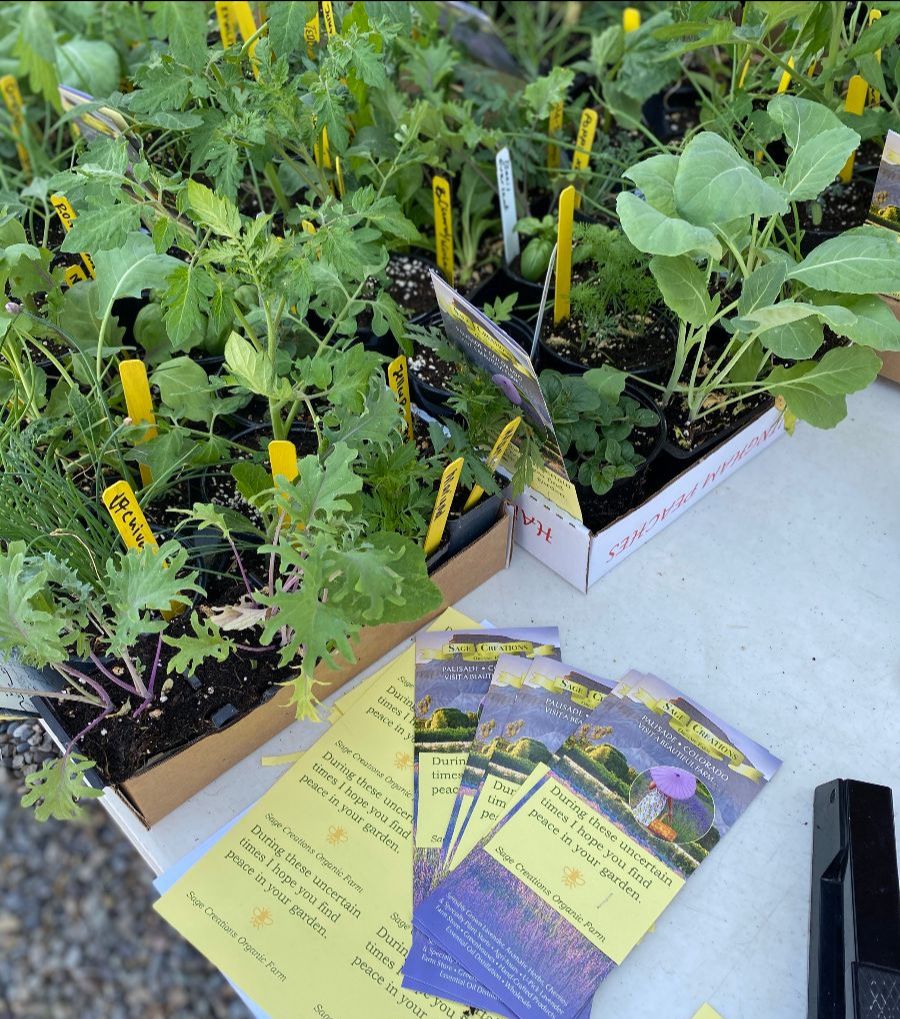
In the 1940s, near the end of World War II, rationing was a part of everyday life in the United States. Food was in high demand and due to the need to feed the men and women fighting the war, the government encouraged Americans to grow food to feed their families and to prevent a national food shortage.
There were approximately 20 million victory gardens in the US, and these gardens produced 40 percent of the country’s vegetables! Gardeners would can any extra food to last them through winter months.
Now it’s 2021, and victory gardens are back — and they’re calling them Wellness Gardens.
Check out this post for tips on planning and planting a bountiful garden.
Sow seeds or plant starts?
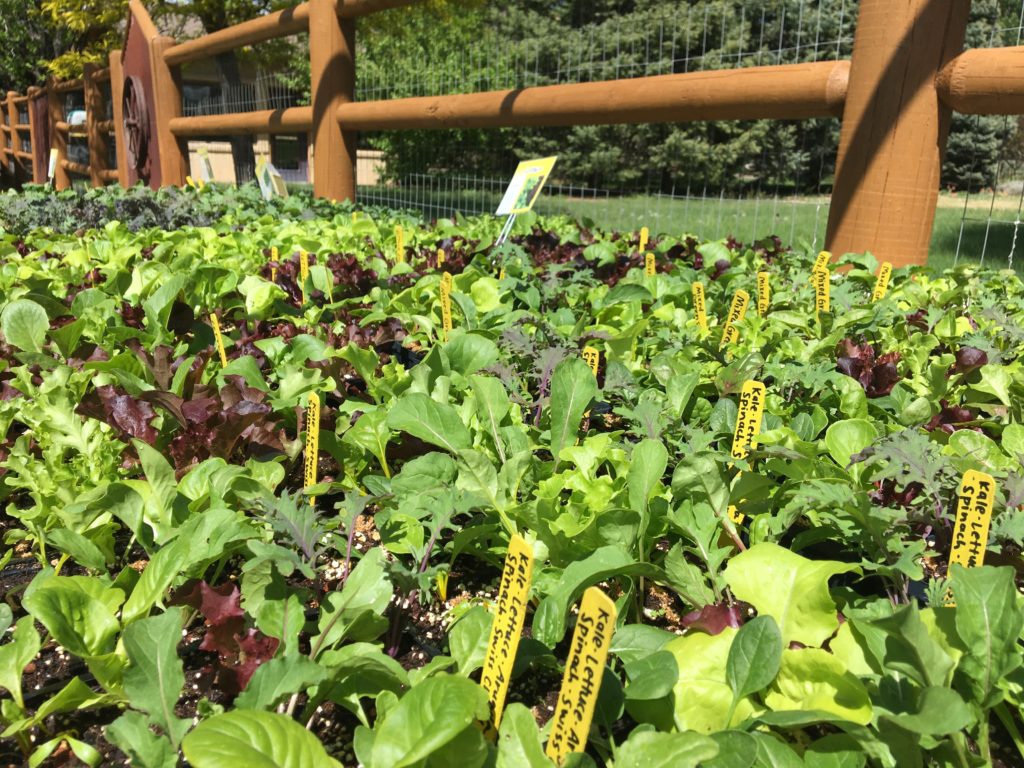
Here in the high desert, knowing what to start from seed, and what to transplant, can make a huge difference in your harvest bounty.
Greens and root vegetables are best to sow directly from seed (though you can transplant greens to kick-off your succession planting and have fresh lettuce to eat all season long). Corn, peas and beans can also be sown directly into your garden.
Melons and squash do well directly sown, but if you live in a climate with a shorter growing season, transplants can help ensure you’ll have a bountiful harvest before the first fall freeze.
Peppers, tomatoes, eggplant, and perennial herbs are a few plants that should always be started indoors and nurtured into healthy plant starts before they make their debut in your garden in May. Onions and leeks also do well when started indoors, since they’re quite delicate when they’re young.
Staying local
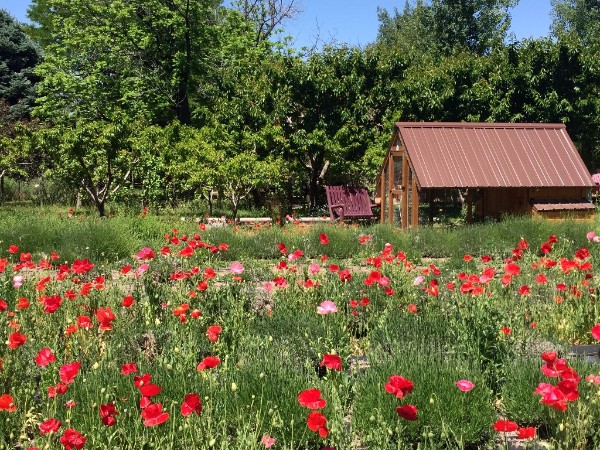
Buying plants locally not only has the same widespread benefits as other local-oriented practices, but also benefits you in a direct and profound way.
Nursery owners, greenhouse tenders and professional growers structure their lives around the seasonal patterns of their local environments. Acute to the precise qualities of their region’s climate, they know how a late freeze affects each and every vegetable. They know how high-altitude sun impacts herbs, and how chilly desert nights make for sweeter fruits.
They know their plants inside and out – fully, deeply, with passion.
Your local grower has the lived experience to hand-pick plant varieties that will do best in your local environment – and they do, because that is their way.
The plants you buy from your local greenhouse have grown up in your climate. They don’t have to adapt to a new environment after you take them home. Local plants are fresh plants – not tired and stressed from being transported across the state or country.
Local plants are fresh plants, and fresh plants are healthy plants.
At Sage Creations Organic Farm, we spend all year nurturing and caring for plants that grow well in our high-altitude, desert climate. And we never sacrifice our growing philosophies along the way.
To combat harsh winters and weeds, we always use natural remedies that qualify us to be certified organic. We choose non-GMO, open-pollinated seeds – organic whenever possible. We nurture our seedlings using natural and organic fertilizers, transplanting them into biodegradable or recyclable pots.
Each spring, we release thousands of ladybugs and lacewings to control pesky insects. In our lavender fields, cherry orchard and tomato and pepper patches, we always weed by hand and never spray. We believe in paying our farm employees sustainable wages, and we make every effort to re-use and recycle as much as we can.
Invest in the farming practices that you believe in.
Fill your garden with plant starts that have naturally adapted to your weather. Invest in your local community – and your garden community – by buying plants from a local source.

